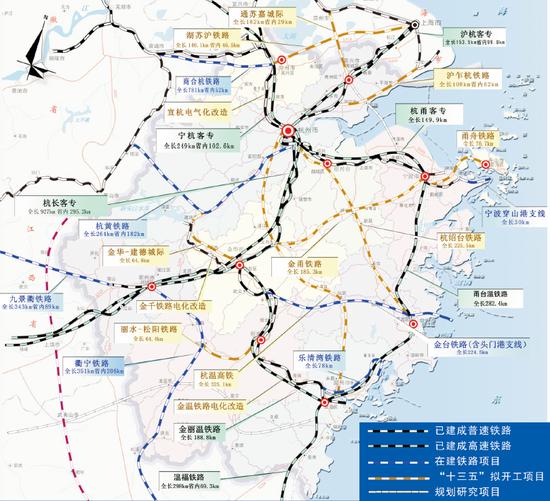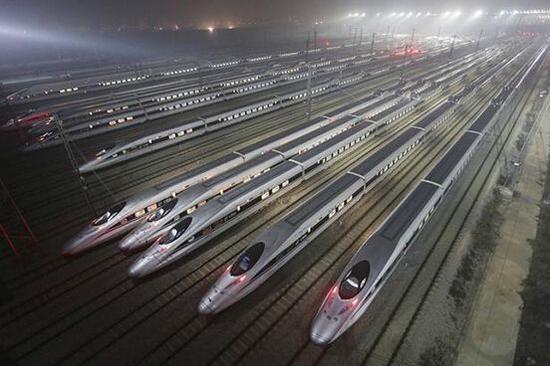Abstract Urban agglomeration is the spatial layout of regional economic integration. Its development degree determines the ability of a region to participate in national or even global competition. The construction of a convenient transportation system between urban agglomerations is the basis of competition. In the context of the accelerating development of urban agglomerations, the localities are...
Urban agglomeration is the spatial layout of regional economic integration. Its development degree determines the ability of a region to participate in national or even global competition. The construction of a convenient transportation system between urban agglomerations is the basis of competition. Under the background of the accelerating development of urban agglomerations, localities have set off a wave of railway investment. Railway construction, especially the construction of intercity rails and high-speed rails, has become the top priority of transportation construction in many places, especially in coastal provinces.
According to public information, Zhejiang, Guangdong, Jiangsu and other provinces have increased their investment in railway construction. Among them, Zhejiang Transportation Investment Group data show that in the first five months of this year, the group has completed a total of 7.151 billion yuan of railway investment, surpassing highway investment for the first time (5.247 billion yuan).
Railway investment is booming
Railway construction is becoming a hot spot for Zhejiang transportation to complement the shortcomings. The data shows that there are currently 11 expressway projects under construction by Zhejiang Transportation Investment Group, with a total mileage of 772 kilometers and a total investment of 135.9 billion yuan. There are 17 railway and rail transit projects with a total mileage of 2,291 kilometers and a total investment of 295.8 billion yuan.

Zhejiang Railway Construction Planning
In Guangdong, this year, three intercity railway projects and six national railway projects will be launched, with a total investment of more than 120 billion yuan. By the end of 2017, the number of railway construction projects in the province will reach 33, with a total mileage of 2,107 kilometers and a total investment of about 472.3 billion yuan. In Jiangsu, the province will complete 40 billion yuan of railway investment this year, a year-on-year increase of 16%. At the end of the "Thirteenth Five-Year Plan", Jiangsu's "three vertical and four horizontal" high-speed railway network will be fully formed. The total mileage of the railway will reach more than 4,000 kilometers, of which the high-speed railway will reach about 2,000 kilometers, more than doubled on the current basis.
Peng Yu, vice president of the Guangdong Provincial Reform Research Association, analyzed the first financial analysis. In recent years, railway investment in coastal provinces has been in full swing, and the proportion has been increasing. Some even surpassed the investment in expressways. The main reason is that, on the one hand, high speed Highway construction has developed earlier. Like some densely populated areas such as the Yangtze River Delta and the Pearl River Delta, highways have become increasingly saturated. On the other hand, compared with road transportation, rail transit has the characteristics of large volume, punctuality and high security. It is a city. The basic framework for group development.
Historical experience has shown that the higher the degree of regional economic integration, the stronger the comprehensive competitiveness of this region. This is also the case. Accelerating the development of urban agglomerations has become an important direction for all regions, and transportation construction, especially rail transit construction, is the top priority for accelerating the construction of urban agglomerations.
Taking Guangdong as an example, Guangdong will promote the integration of the Pearl River Delta and Guangdong, East and North this year, and promote the integration of the transportation infrastructure such as rail transit, expressways and inland waterways in the Pearl River Delta and the eastern and western parts of Guangdong.
Hu Gang, president of Guangzhou South China Urban Research Association and professor of Jinan University School of Management, analyzed the first financial analysis. The development of rail transit is a necessary foundation for the industrial transfer in the Pearl River Delta and the eastern and western regions of Guangdong. "The capacity of rail transit is large and punctual, and the industrial transfer is mainly based on the improvement of the intercity track." Hu Gang said.
Peng Yu also believes that the construction of infrastructure such as rail transit will greatly shorten the distance between Guangdong and North and the Pearl River Delta. Based on the cost factors such as land price and manpower, the industry will achieve a reasonable division of labor between the two. In other words, the development of rail transit will promote the industrial gradient distribution between different cities within the urban agglomeration.

In recent years, the construction of the intercity railway, feeder railway and other projects has gradually changed from the China Railway Corporation to local government and social capital. In August 2013, the State Council issued the "Opinions on Reforming the Railway Investment and Financing System to Accelerate the Construction of Railways", pointing out that the inter-city railway, the municipal (suburban) railway, the resource development railway and the feeder railway were released to local governments and social capital. Ownership and management rights encourage social capital to invest in railway construction.
Lin Jiang, director of the Finance and Taxation Department of Lingnan College of Sun Yat-Sen University, analyzed the first financial analysis. The construction of local railways, especially inter-city rails, is conducive to the rational distribution of local industries within a larger urban agglomeration and the promotion of local urbanization processes and regions. Economic development, so local governments are very willing to build intercity rails, but the biggest problem is that the current intercity rail and many other railway projects are dominated by local governments, and how to solve the funding sources becomes the key.
Lin Jiang believes that the return on investment of railway projects is relatively low, and many railway passenger transports do not make money. Under such circumstances, it is also difficult for localities to attract social capital investment.
Under this circumstance, the comprehensive development of land along the line is expected to be high. The State Council's Opinions on Reforming the Railway Investment and Financing System to Accelerate the Construction of Railways issued by the State Council in 2013 proposed to increase efforts to revitalize railway land resources and encourage comprehensive development and utilization of land.
Through the development of land assets along the line, increasing the "hematopoietic" function and improving the economic efficiency of enterprises to support railway construction and operation, this may open up policy space for China Railway Investment and Financing.
Linjiang analysis, the introduction of social capital to participate in the comprehensive development of land along the line, also requires local governments to be more scientific and rational for the construction of inter-city rail, and more closely integrated with urban planning. Among them, the passenger flow of the line is very important, so only the large passenger flow, the value of the station and land development along the line can be maximized.
Carfentrazone Herbicide ,Carfentrazone Ethyl Thixotropic Type ,Carfentrazone Fmc ,Carfentrazone Ethyl Cas 128621-72-7
Jiangsu Hanlian Biological Technology Co.,Ltd , https://www.hanlianbio.com